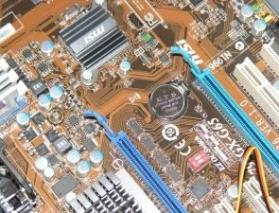
People have been making simulated worlds for a long time. With the advent of the computer in the 1970s, we started making simulated worlds on computers. The earliest digital worlds were text-based, but graphics soon followed. Primitive video games built worlds you could explore and interact with. The game SimCity, which appeared in 1989, let you design and build your own simulated city, with simulated humans. As these games evolved, they started running on sophisticated physics engines, which could digitally simulate the physics of our world. And some of the characters became animated by AI, so they could have some primitive agency. Meanwhile, simulations started to pervade the sciences, especially physics and astronomy. Digital simulations of star formation and solar system formation let astronomers do experiments. They could build computer models of their theories, and see how well those models matched our actual world. Cosmologists have built enormous simulations of our whole universe, like the Illustris simulation. And physicists have built precise simulations of the laws of quantum mechanics.
Digital simulations of universes and humans are getting more and more realistic. It’s not far-fetched to think that these simulations can converge to exact realism: a simulation of our universe so precise that it’s scientifically indistinguishable from our universe. Any humans in that universe are indistinguishable from real humans. As a naturalist, I think consciousness emerges from physical brain processes: replicate the brain, you replicate consciousness. A digital brain that exactly duplicates your brain has your consciousness. I don’t think there’s anything mystical about this. It’s just science. If there were an exact digital replica of you, you wouldn’t be able to tell the difference. Which leads to a well-known question: how do you know you’re not in simulation right now? An argument that you are in a simulation was first proposed by Hans Moravec back in 1992, and later popularized by Nick Bostrom in 2003. Most recently, Dave Chalmers has written an excellent book on simulationism. The simulation hypothesis states that we are, in fact, living in a simulated universe. What if this hypothesis is true? Let’s assume that it is true. The idea that the simulation hypothesis is true is simulationism.
If our universe is a simulation, then it was designed and created by some cosmic engineers. Lots of people have observed that these cosmic engineers resemble the gods and goddesses of old indigenous religions. They resemble the deities of ancient Greek and Roman religions, Egyptian or Norse religion, Aztec or Mayan religions. And they resemble the deities of living religions like Hinduism and Yoruba religion. Those religions posit many gods and goddesses. Likewise, the simulationist posits many cosmic engineers. This contrasts with monotheism. While you might set up your own version of SimCity, that doesn’t make you the sole god of that simulation. SimCity is an app designed and created by dozens of engineers. It runs on a computer designed by hundreds of engineers. And the cosmic engineers who designed and created our universe are not supernatural or non-physical. They are natural physical organisms. They might be like us, or they might be like science fiction aliens. But they designed and built some physical computer which simulates our universe. Since they’re not supernatural, a naturalist can welcome them. And since they’re natural physical deities, they’re not theistic. Some atheists say that atheism rules out all gods and goddesses. It does not rule out these natural gods and goddesses. Atheists are free to believe in all sorts of naturalistic deities. Of course, if our universe was designed by deities, you might wonder where they came from. The answer is that they evolved in their own universe. It’s evolution all the way down. Ultimately, evolution is a self-bootstrapping process. It’s self-amplifying. But the way it works is a topic for another time. Here we’re talking about simulationism.
Simulationism motivates a naturalistic theology. One point of this theology infers that the deities are truly superhuman. Designing, building, and running an entire universe like ours is far beyond our puny human abilities. The deities are far more intelligent than we are, and far more powerful. Since advanced design work requires lots of cooperation, they are probably more socially competent, that is, more virtuous. We know the work that needs to be done to build simulated universes, like video games. You have to build a physics engine, that is, you have to build the laws of nature. But the laws don’t define the content. So you have to define the content for the world. You have to design the AI that powers your non-player characters. Lots of this work involves doing science, and using the science to do engineering. This parallels the roles of the deities in pagan religions, or religions that take their inspiration from nature. The deities are associated with departments of nature, that is, with the special sciences. It’s interesting to see how this might work out, especially since it challenges common assumptions about gods and goddesses. For the sake of familiarity, I’ll talk about ancient Greek gods and goddesses here.
Simulationism entails that the deities had design goals: they wanted to make a universe like our universe. They wanted to make a universe in which the evolution of physical complexity rises to great heights. Perhaps they wanted to do this to serve artistic goals: they make simulations as cosmic works of art. Or maybe they wanted to simulate their own ancestors. But all that matters here is that they were doing design work, using their superhuman brains to design the laws and initial contents of a complex universe. We actually have an example of how this cosmic design work gets done: the mathematician John Conway, along with his students, designed the cellular automaton known as the game of life. He had a goal: to design a cellular automaton whose laws would permit the existence of a universal computer. Based on theoretical calculations, Conway proved such a universal computer was possible in the game of life. But it took several decades to actually build such a computer: it was finally constructed by John Rendell. So Conway’s project was a success. Conway, his students, and Rendell are all deities in the game of life.
The game of life was intelligently designed: Conway and his students used their brains. And the universal computer was intelligently designed by Rendell. How did they do this? They didn’t do it through some mystical foresight or visionary consciousness. They did it through lots of trial and error. They intelligently designed their universe by running evolutionary optimization algorithms on the ideas in their brains. Properly understood, intelligent design is just a Darwinian process running in brains. Now suppose the deities who designed our universe wanted to extend this game of life project, to see if evolution running in the universe (not in brains) could produce a universal computer. Their goal was to design cosmic laws and initial contents that would maximize the probability of the evolution of universal computing machines. So they set to work. For the sake of illustration, I’ll use the old Greek myths to describe our simulators.
According to my modernized mythology, the Titans work out the basic physics of our universe. Their design goal is to make laws of physics that maximize the probability of the evolution of complex wholes. They’re interested in ways that simpler things can combine into more complex things. People often think of Gaia as just associated with the planet earth. But the symbolism is much deeper: the earth signifies the basis, the foundation of all physics. Gaia works out the fundamentals of quantum mechanics. Since Uranos is linked with the sky, and the sky symbolizes the motions of the celestial bodies, Uranos works out the laws of general relativity. The old Platonic philosopher Iamblichus said Chronos tends to pull things together (On the Mysteries, 1.18). Chronos has to synthesize the work of his parents: he’s responsible for making quantum mechanics and general relativity work together. He designs quantum gravity.
Since Helios is associated with the sun, perhaps he designs thermonuclear fusion. Hyperion and Theia finely tune the laws so that they maximize the probability of sidereal evolution of habitable planets. Yet some theory of habitable planets is needed here. So Hades gets to work studying geology. He works out the kinds of geological constraints required for the evolution of rocky planets. Likewise Poseidon figures out the necessary hydrodynamics: what properties do liquids need to facilitate life? And Zeus studies the ways planetary atmospheres contribute to evolution. Here Gaia can come back into the picture: she finely tunes the laws to maximize the probability of planetary homeostasis. Artemis finely tunes those laws so that they maximize the probability of the evolution of animals. Apollo also finely tunes them so that organisms will evolve mechanisms of defense and repair. Hephaistos finely tunes them for the emergence of technology. These deities place design constraints on each other, which they must cooperatively satisfy. They have to work through zillions of trial and error design iterations in order to optimize the laws for the evolution of complexity.
Like all successful designers, the deities work from abstract to concrete, from general to specific. When it comes to biological evolution on planets like earth, they start working at a pretty high level of abstraction. They need to figure out an evolutionary optimization algorithm that can run on planets to maximize the probability that universal computers will appear. So they set to work on the abstract principles. They figure out that evolutionary algorithms climb up Mount Improbable. Demeter figures out that life evolves through differential reproduction. Living things need to make lots of copies of themselves, and that these copies have to vary. Ares figures out that competition can be used as a mechanism for climbing higher on Mount Improbable. But there’s a worry: what if the landscape of Mount Improbable has too many ditches or pits in which evolution can get stuck? More abstractly, what if it has too many attractor basins from which life can’t escape? Poseidon starts to work on how to inject randomness into the system so that it doesn’t get stuck. He works out the dynamics of mutation and thinks about how to inject physical accidents, like earthquakes or ice ages, to prevent too much stability.
Hades is an important figure here. We superficially think of him as a god of death. Death prevents organisms from holding on to resources. It ensures that the cycles of life continue. More deeply, however, Hades is tasked with ensuring that evolution doesn’t get stuck. Any organism that lives forever is an immovable fixed point in the evolutionary process: it is an organism that doesn’t evolve, but merely persists in the same way. An immortal organism or immortal species is a place where evolution gets stuck. Hades is obsessed with the high-dimensional topology of Mount Improbable. Evolution won’t work if the landscape of Mount Improbable has too many ditches and pits. It also won’t work if most of its paths just wander through the lowlands of simplicity. Hades makes sure the topology of the evolutionary landscape always has paths that go upwards from simplicity to complexity. He’s the one who figures out how to use natural selection as a rachet that won’t slide back down the slopes of Mount Improbable. He figures out that Demeter needs to add memory to her reproductive scheme. The self-reproducing organisms can’t just make copies like crystals or fires. They have to store memories of their past successes, and pass them down to their offspring. So Demeter gets to work. She figures out that genetic templating is a good copying mechanism. She passes this design constraint on to Zeus and Apollo, who are working on chemistry. Even more abstractly, Hades is the god of irreversibility. He is responsible for the thermodynamic laws that drive the evolution of complexity and value. Without irreversibility, without Hades, no value exists at all.
Somebody might object that this simulationist theology is pretty shallow: it’s just the personification of nature. This sort of “natural theology” was thrown out long ago. If you know the laws of gravity, there’s no reason to add some person who made those laws. If we have laws, we don’t need law-givers. The reply is that simulationist theology can go much deeper than the old personifications of nature. The deities (as cosmic engineers) are designing and building a cosmic computer simulation. Hence there’s no reason to think of them in anthropomorphic terms. It’s more accurate to think of them in computational terms. We already use artificial intelligence to solve design problems. Evolution at all scales, from physical to biological to technological, is a vast optimization algorithm. If evolution is the basis for all complexity, then evolution has to be a self-bootstrapping process that starts with its own simplicity and makes itself more complex. As it does, distinctive optimization algorithms emerge within the broader evolutionary algorithm. These are abstract mathematical features of the ultimate evolutionary process, and these ultimate features are properly called the deities. The deities aren’t “people” like us; on the contrary, they’re the deepest optimization features of the universal self-bootstrapping, self-maintaining, and self-amplifying evolutionary algorithm. As optimizers, they are powerful, they are value-maximizers, and they are rational. They are rational moral agents. As rational moral agents, these algorithms are personal. But there is no reason to think that they are mental or conscious. They are not like us. Simulationism entails that nature is filled with lots of extremely abstract personal algorithms. These optimizers look a lot like the highly abstract metaphysical deities in ancient Neoplatonism.
After zillions of trial and error practice runs, the cooperative engineering pays off: the deities have laws and initial conditions that will maximize the probability that universal computers will evolve inside their simulation. They start up their cosmic computer. As it runs, our universe comes into existence. Eventually, we appear. Their project is a success! And, awhile after we appear, we start wondering whether we’re in a simulation. We start talking about how the cosmic engineers are like gods and goddesses. After all this talk, you might wonder whether simulationism has any practical consequences. As Moravec, Bostrom, and Chalmers have pointed out, it entails that lots of pagan religious practices are not irrational. The simulation argument, and its resulting theologies, provide reasons for positing deities and their activities. Since the deities are persons (but not humans) who designed and created us, it’s rational to give thanks to them. It’s rational to see divine persons at work in nature. It’s rational to talk to them. It’s perfectly consistent for an atheist to offer libations to Athena and to point to the sun and say “Hail Apollo!”. You might not feel much motivation to do this, but if you do, it’s perfectly sensible. However, since the deities have designed laws, it’s probably wrong to think that they would violate those laws. They don’t work miracles or grant any special blessings or curses. For the simulationist, prayers, sacrifices, and worship don’t make any sense. Still, simulationism entails that lots of pagan practices and rituals make sense in an atheistic context. It shows how you can be an atheistic pagan; it supports atheopaganism.












